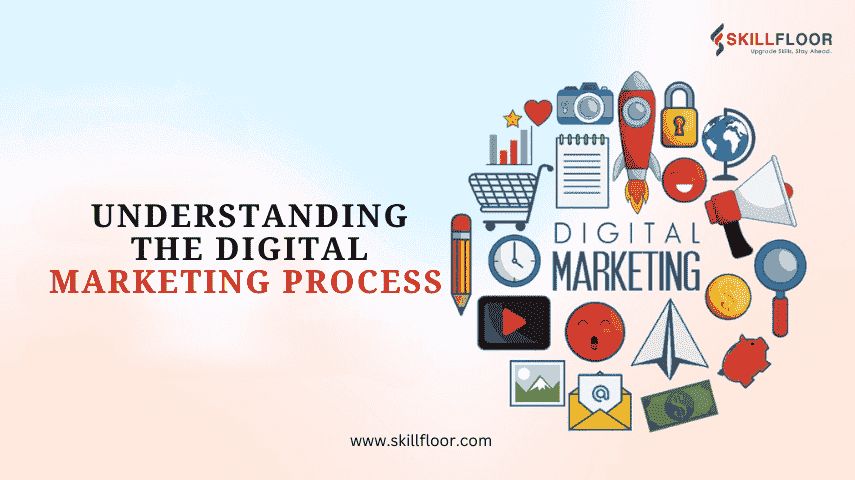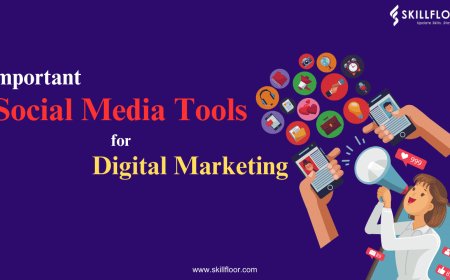Understanding the Digital Marketing Process
Learn the 5-step digital marketing process: Research, Create, Promote, Analyze, Optimize. Achieve business goals with a clear, structured strategy.

What’s the Digital Marketing Process?
Digital marketing is like a game plan for promoting something online. Imagine you have a new product, a brand, or an idea you want people to know about. Digital marketing helps you get that message out to the right people and achieve your goals. But to do this effectively, you need a clear and organized process.
I’ve worked with various businesses, and one thing that stands out is how a structured process makes a huge difference. It helps you stay organized, track progress, and see real results. Think of it as a roadmap that guides your marketing efforts from start to finish.
Why is Having a Process Important?
Without a clear process, getting lost or making mistakes is easy. Picture trying to bake a cake without a recipe—you might end up with something that doesn’t taste or rise properly. Similarly, without a digital marketing process, you might waste time and money without seeing good results.
A solid process keeps you focused on what matters, helps you avoid common challenges, and makes sure that every step of your marketing campaign is planned and executed effectively.
So, how do you build and follow a successful digital marketing process? Let’s break it down into five simple steps.
-
Step 1: Research
-
Step 2: Create
-
Step 3: Promote
-
Step 4: Analyze
-
Step 5: Optimize

Detailed Step By Step
Step 1: Research
The first step is research. Think of it as doing your homework before starting a big project. Here’s what you need to do:
-
Learn About the Business: Start by understanding what the business is all about. What are its goals? What makes it unique? Knowing this helps you tailor your marketing efforts to fit the business’s needs.
-
Know Your Audience: Research who your target audience is. Who are they? What are their interests, needs, and behaviors? This information helps you create marketing messages that will resonate with them.
-
Understand the Product: Get to know the product or service you’re promoting. What are its features and benefits? Why would people want to buy it? This will help you highlight the product’s strengths in your marketing.
-
Check Out the Competition: Look at what other businesses in the same industry are doing. What are their strengths and weaknesses? Understanding the competition helps you find ways to stand out and attract customers.
This research gives you a solid foundation to build your marketing strategy.
Step 2: Create
Once you’ve gathered all your research, it’s time to create your plan. Here’s what to focus on:
-
Set Clear Goals: Define what you want to achieve with your marketing campaign. Are you aiming for more website visitors, increased sales, or better brand awareness? Setting clear goals helps you measure success.
-
Develop a Strategy: Plan how you’ll reach your goals. This includes deciding on your brand’s message, how you’ll create content, and which digital marketing channels you’ll use (like social media, search engines, etc.).
-
Make a Detailed Plan: Write down all the steps you’ll take, including deadlines and who will be responsible for each task. This plan will guide your marketing activities and keep everyone on track.
-
Build Your Online Presence: Ensure that your main digital assets—like your website, blog, and app—are ready and working well. These are the key places where people will find and interact with your brand.
Step 3: Promote
With your plan in place, it’s time to promote your business. Here’s how you can do it:
-
Optimize for Search Engines: Use search engine optimization (SEO) to make sure your website appears in search results when people look for related topics. This helps attract organic (unpaid) traffic to your site.
-
Use Paid Ads: Invest in paid advertising to drive traffic to your site quickly. You can use search ads (that appear in search results) or display ads (that appear on other websites).
-
Leverage Social Media: Share your content and engage with your audience on social media platforms like Instagram, Facebook, and Twitter. Social media is a great way to build relationships and increase visibility.
-
Email Marketing: Send targeted emails to people who have shown interest in your business. Keep them updated with news, offers, and valuable content.
-
Explore Additional Channels: You might also use affiliate marketing (where others promote your product for a commission) or messaging apps to reach more people.
Choose the channels that best align with your strategy and where your audience is most active.
Step 4: Analyze
Once your promotion is underway, you need to check how things are going. Here’s how:
-
Track Performance: Use tools like Google Analytics to monitor your website and app performance. Track important metrics like how many people are visiting your site, what they’re doing, and whether they’re taking desired actions (like making a purchase).
-
Compare Results to Goals: Look at your performance data and compare it to the goals you set earlier. Are you achieving what you aimed for? This helps you see what’s working and what needs improvement.
-
Gather Insights: Analyzing data provides insights into how users are interacting with your site and content. This information helps you understand your audience better and refine your strategies.
Step 5: Optimize
Based on your analysis, it’s time to make improvements:
-
Make Adjustments: Change things that aren’t working well. This could include updating your content, trying new advertising strategies, or tweaking your website design.
-
Keep Improving: Digital marketing is always evolving. Regularly review and adjust your strategies to stay up-to-date with new trends and audience preferences.
-
Refine Your Approach: Use what you’ve learned from your analysis to continually refine your marketing process. This helps you stay effective and efficient in reaching your goals.
The digital marketing process is about planning and executing your marketing efforts in a structured way. By following these five steps—Research, Create, Promote, Analyze, and Optimize—you can manage your campaigns more effectively and achieve better results.
A well-defined process helps you stay organized, make informed decisions, and improve your marketing strategies over time. Whether you’re just starting out or looking to enhance your existing efforts, understanding and applying this process will set you up for success.




























































